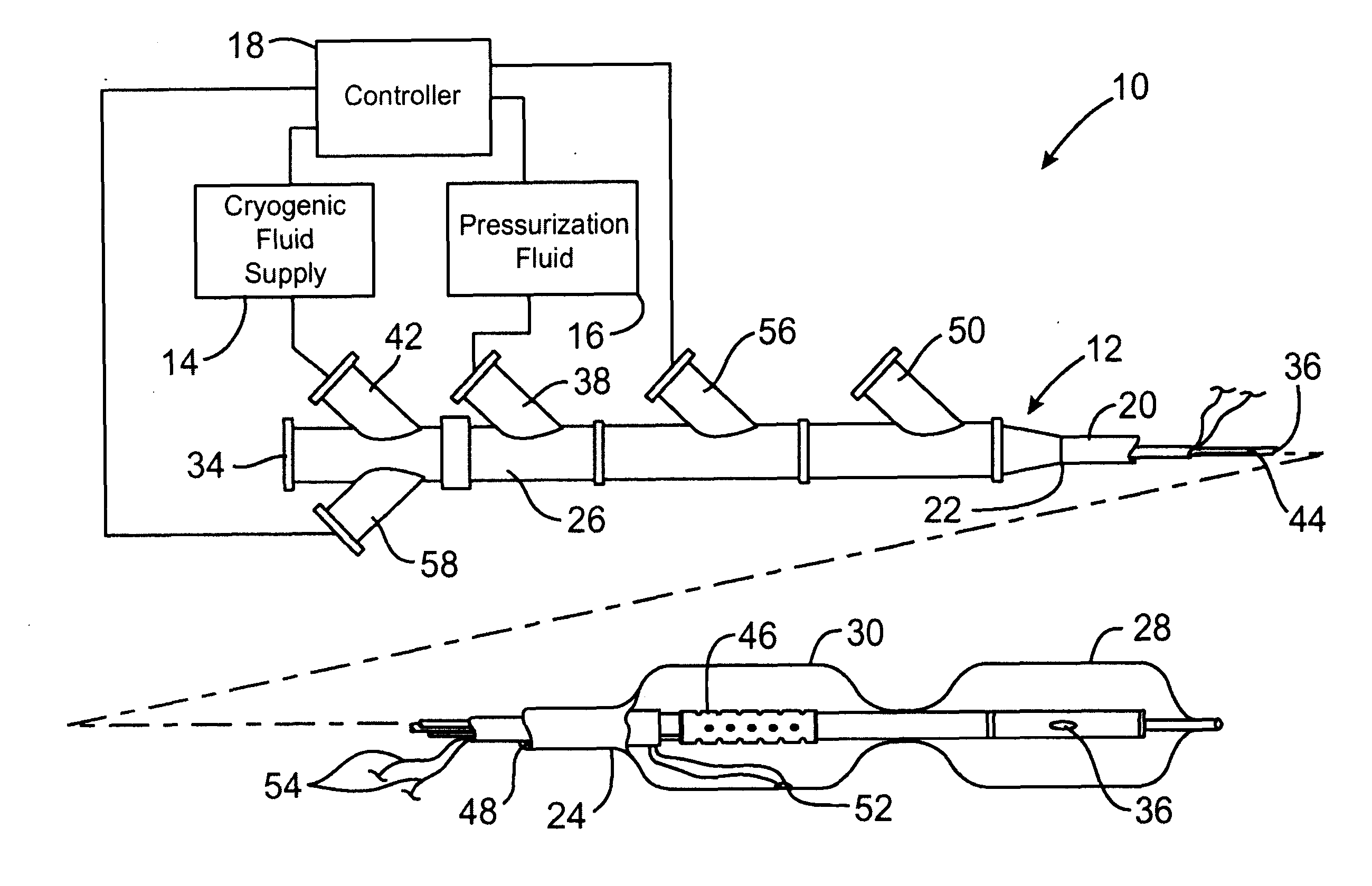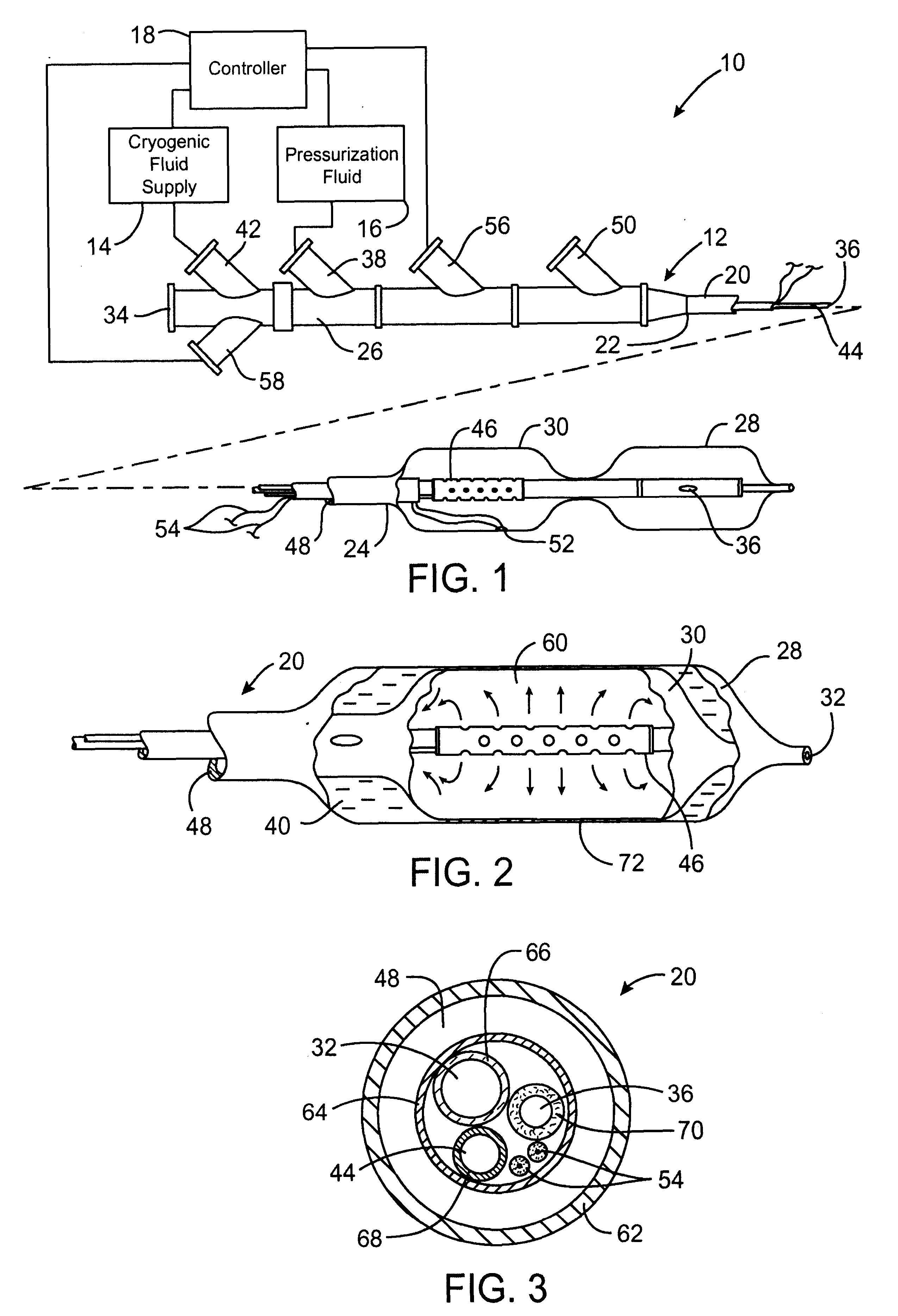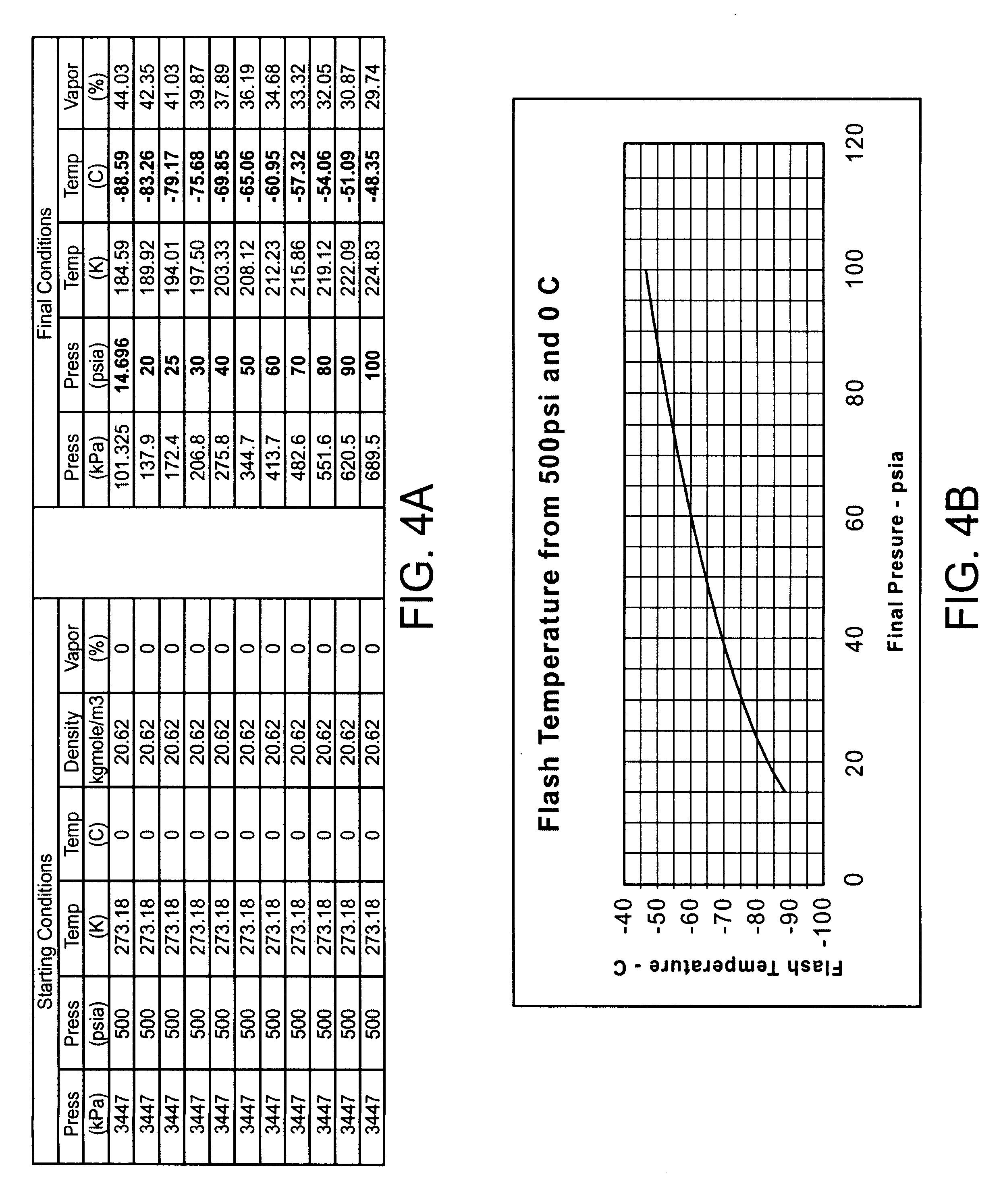Cryogenically enhanced intravascular interventions
a technology vascular artery wall, which is applied in the field of cryogenically enhanced intravascular interventions to achieve the effect of less stenosis
- Summary
- Abstract
- Description
- Claims
- Application Information
AI Technical Summary
Benefits of technology
Problems solved by technology
Method used
Image
Examples
experimental ii
Cryogenic Intravascular Treatment for Inhibition of Neointimal Formation in the Balloon Injury Model
Objectives
The proliferative and morphometric response in the swine coronary model were compared after balloon injury to balloon injury and intravascular cryogenic treatment.
In the rabbit carotid model, percent stenosis in cryogenically treated arteries was compared to sham arteries.
Methods
Seven pigs were treated with balloon overstretch (balloon to artery ratio 1.3:1) in at least two coronary arteries. Intravascular cryogenic treatment was administered in at least one of the arteries after overstretch using a cooled angioplasty balloon. BrdU was administered and the animals were sacrificed on day 7.
Two rabbits (total eight sites in the carotid arteries) were treated with a cooled or non-cooled angioplasty balloon. None of the rabbit carotids received balloon overstretch. The rabbits were sacrificed at 28 days.
Results
In the swine, BrdU index in the sham measured 16% to 43% medial fract...
PUM
 Login to View More
Login to View More Abstract
Description
Claims
Application Information
 Login to View More
Login to View More - R&D
- Intellectual Property
- Life Sciences
- Materials
- Tech Scout
- Unparalleled Data Quality
- Higher Quality Content
- 60% Fewer Hallucinations
Browse by: Latest US Patents, China's latest patents, Technical Efficacy Thesaurus, Application Domain, Technology Topic, Popular Technical Reports.
© 2025 PatSnap. All rights reserved.Legal|Privacy policy|Modern Slavery Act Transparency Statement|Sitemap|About US| Contact US: help@patsnap.com



